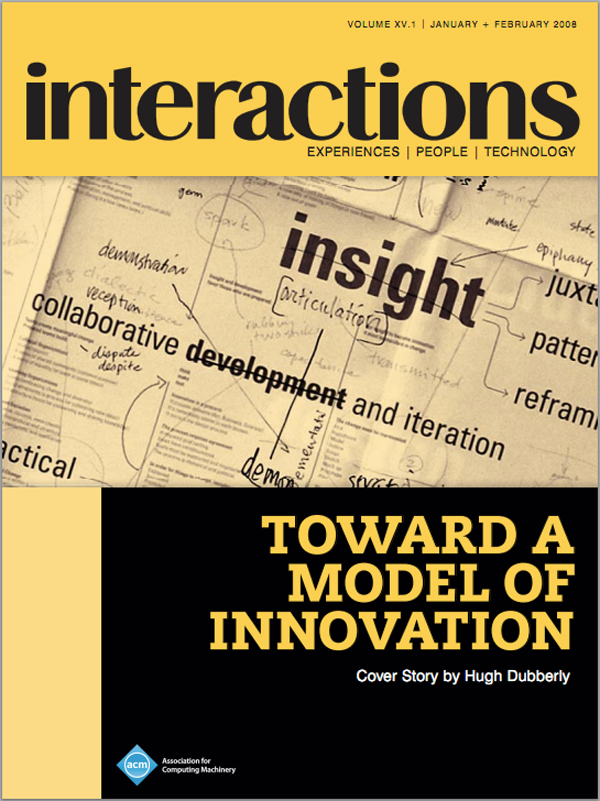Authors:
Stefana Broadbent, Valérie Bauwens
Convergence has been the mantra of the information and communication-technology industries for the past few years, and it is defining the strategy of every Telco, broadcaster, ISP, and phone manufacturer in the world. Technically, convergence defines a multimedia environment and/or network where signals, regardless of type (i.e., voice, quality audio, video, data, etc.) and encoding methodology may be seamlessly exchanged between independent endpoints with similar characteristics [1]. From the user's perspective, this means that all media and communication channels can be merged and received on any device, and the related brands will soon be offering all the related services.…
You must be a member of SIGCHI, a subscriber to ACM's Digital Library, or an interactions subscriber to read the full text of this article.
GET ACCESS
Join ACM SIGCHIIn addition to all of the professional benefits of being a SIGCHI member, members get full access to interactions online content and receive the print version of the magazine bimonthly.
Subscribe to the ACM Digital Library
Get access to all interactions content online and the entire archive of ACM publications dating back to 1954. (Please check with your institution to see if it already has a subscription.)
Subscribe to interactions
Get full access to interactions online content and receive the print version of the magazine bimonthly.







Post Comment
No Comments Found